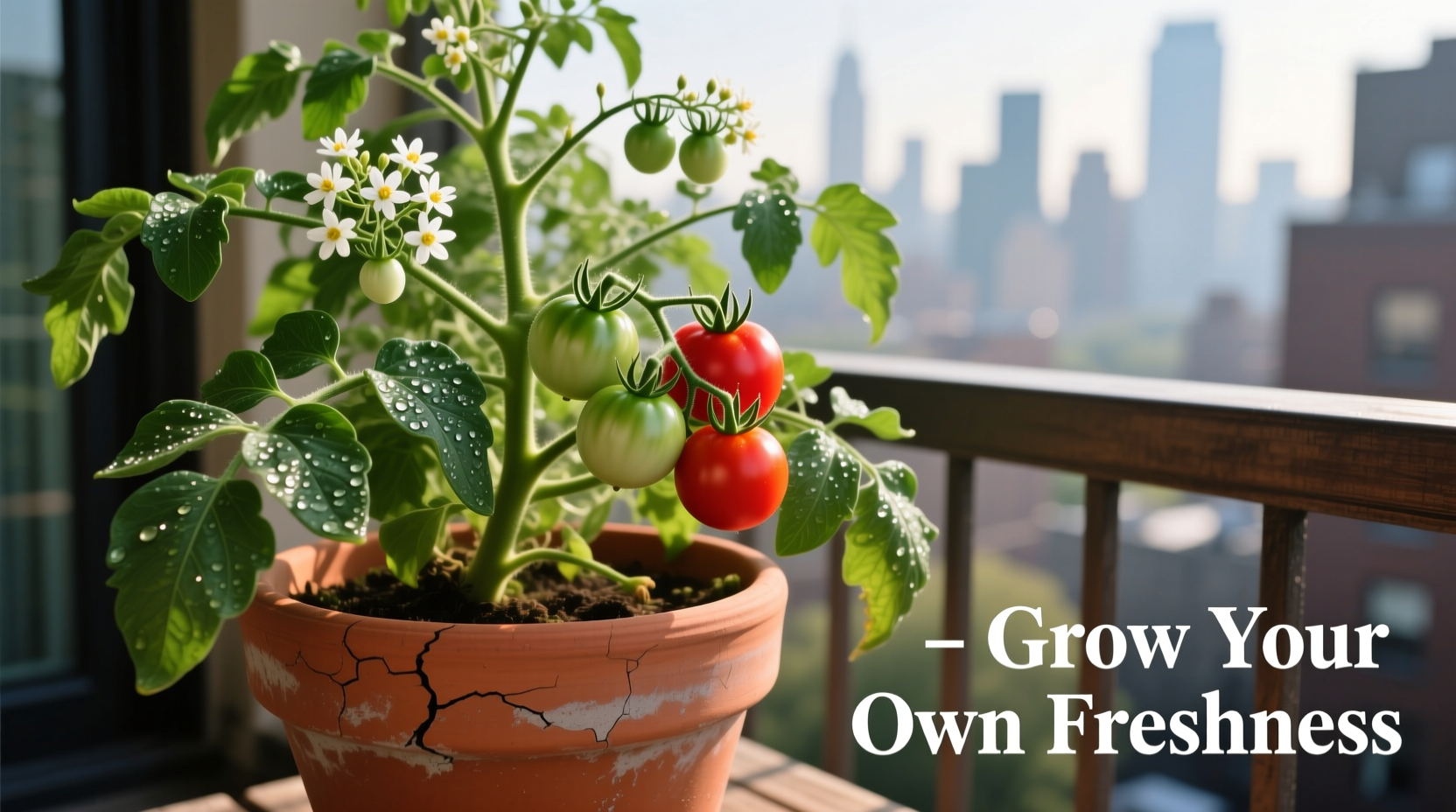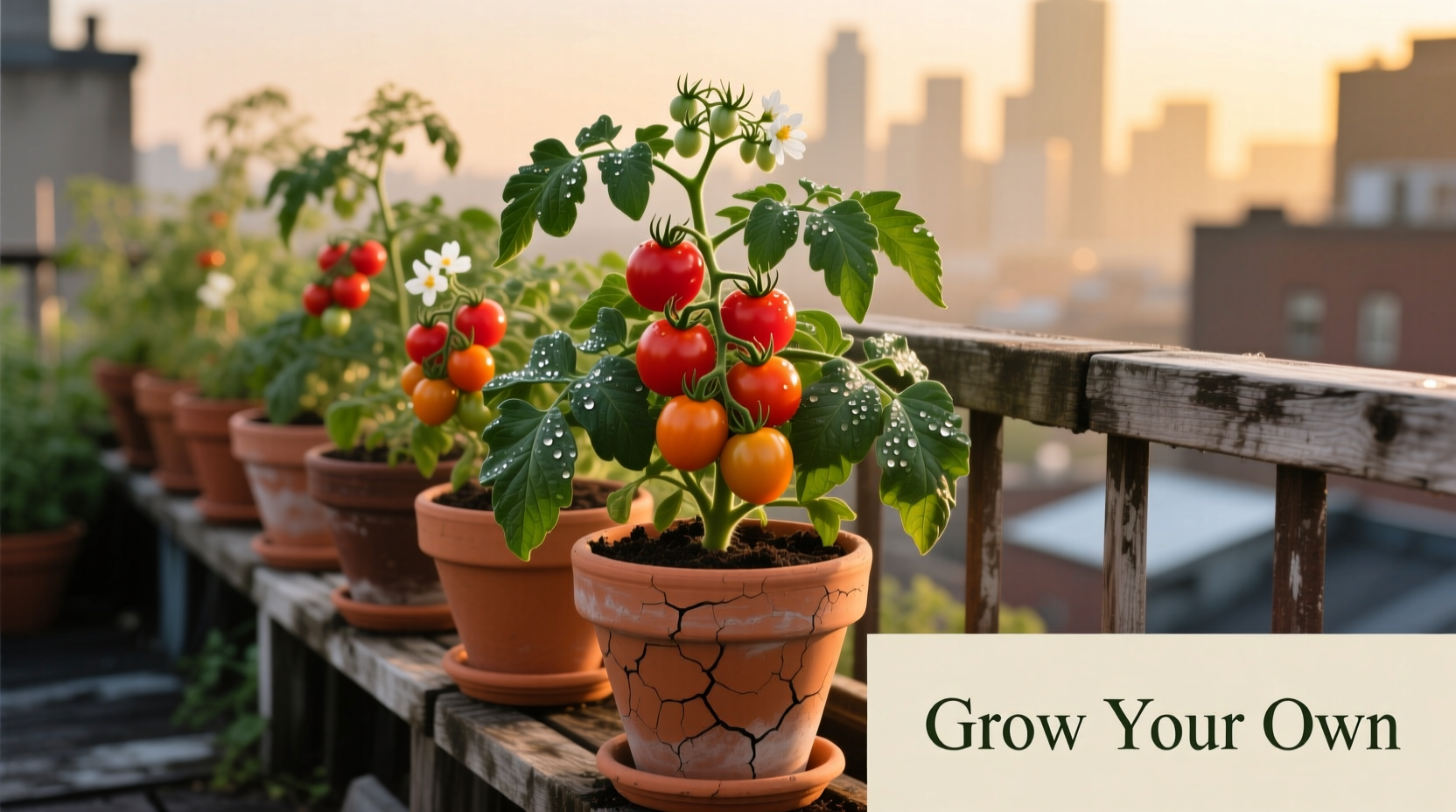Grow thriving tomato plants in pots with these proven techniques: Use containers of at least 5 gallons (20L) with proper drainage, select compact varieties like 'Patio Princess' or 'Tiny Tim', fill with premium potting mix (not garden soil), and water consistently when the top inch of soil feels dry. Container-grown tomatoes typically produce harvests in 60-80 days with proper care.
Why Container Gardening Works for Tomatoes
Container gardening makes fresh tomatoes accessible to everyone, regardless of space limitations. Urban dwellers, apartment residents, and those with poor soil quality can enjoy homegrown tomatoes by growing them in pots. According to the University of Minnesota Extension, properly managed container tomatoes often outperform garden-grown plants due to better soil control and reduced disease pressure.

Choosing the Right Tomato Varieties for Containers
Not all tomatoes thrive in pots. Compact varieties with determinate growth habits work best for container gardening. These plants reach a predetermined size and set most of their fruit within a concentrated period.
| Variety Name | Type | Container Size | Days to Harvest | Special Features |
|---|---|---|---|---|
| 'Patio Princess' | Determinate | 5 gallons | 65 | Self-pruning, disease resistant |
| 'Tiny Tim' | Dwarf | 3 gallons | 60 | Perfect for small spaces |
| 'Bush Early Girl' | Semi-determinate | 10 gallons | 55 | Early producer, great flavor |
| 'Tumbling Tom' | Indeterminate | 8 gallons | 70 | Ideal for hanging baskets |
Selecting the Perfect Container
Container size directly impacts tomato success. The Oregon State University Extension Service recommends minimum 5-gallon containers for most varieties, with larger indeterminate types requiring 10-15 gallons. Key container considerations:
- Material matters: Fabric pots provide excellent aeration but dry faster; plastic retains moisture better but can heat up; terra cotta looks attractive but requires frequent watering
- Drainage is critical: Ensure at least 3-5 drainage holes (1/4 inch diameter) to prevent root rot
- Depth over width: Tomatoes develop deep root systems—choose containers at least 12 inches deep
- Color considerations: Light-colored containers reflect heat, while dark colors absorb it—choose based on your climate
Soil and Fertilizer Requirements
Garden soil compacts in containers and may contain pathogens. Always use premium potting mix specifically formulated for containers. The Penn State Extension recommends this ideal soil composition:
- 60-70% high-quality potting mix
- 20-30% compost for nutrient retention
- 10% perlite or vermiculite for aeration
Fertilization schedule for container tomatoes:
- At planting: Mix slow-release organic fertilizer (3-4-6 ratio) into soil
- First flowers appear: Begin bi-weekly liquid feeding with balanced fertilizer
- Fruit set begins: Switch to potassium-rich fertilizer (5-10-10) to boost fruit production
- Mid-season: Refresh top 2 inches of soil with compost to replenish nutrients
Planting Your Tomato in a Pot
Follow these steps for successful planting:
- Choose healthy seedlings with sturdy stems and no flowers or fruit
- Bury 2/3 of the stem—tomatoes develop roots along buried stems
- Add a 1-inch layer of mulch to retain moisture
- Install support system (cage or stake) at planting time
- Water thoroughly until it drains from the bottom
Pro tip: For determinate varieties, plant at the same depth as the nursery pot. For indeterminate types, bury deeper to encourage stronger root systems.
Watering and Maintenance Schedule
Container tomatoes require consistent moisture management. Research from University of Wisconsin Extension shows inconsistent watering is the #1 cause of container tomato failure. Follow this maintenance timeline:
| Time Period | Watering Needs | Additional Care |
|---|---|---|
| First 2 weeks | Check daily, water when top inch is dry | No fertilizer, focus on root establishment |
| Flowering stage | Water daily in hot weather, every other day otherwise | Begin balanced liquid fertilizer every 10-14 days |
| Fruit development | Maintain consistent moisture (never let dry completely) | Switch to potassium-rich fertilizer, remove suckers on indeterminates |
| Harvest period | Water regularly but slightly reduce frequency | Continue fertilizing, harvest ripe fruit promptly |
Troubleshooting Common Container Tomato Problems
Even with proper care, container tomatoes may face challenges. Here's how to address the most frequent issues:
Yellowing Leaves
Cause: Nitrogen deficiency or overwatering
Solution: Apply balanced liquid fertilizer and check drainage. Allow top inch of soil to dry between waterings.
Blossom End Rot
Cause: Calcium deficiency often triggered by inconsistent watering
Solution: Maintain even soil moisture and apply calcium spray to affected plants. Add crushed eggshells to soil for long-term calcium.
Small Fruit Size
Cause: Overcrowded roots or nutrient imbalance
Solution: Ensure adequate container size (minimum 5 gallons) and switch to potassium-rich fertilizer during fruiting.
Harvesting and Enjoying Your Container Tomatoes
Container-grown tomatoes often ripen earlier than garden plants due to warmer root zones. Harvest when tomatoes reach full color and yield slightly to gentle pressure. For best flavor, pick in the morning when sugars are highest.
Extend your harvest season by moving containers to follow the sun throughout the growing season. In cooler climates, bring pots indoors when temperatures drop below 50°F (10°C) to continue production.
Advanced Tips for Maximum Container Tomato Success
Take your container tomatoes to the next level with these professional techniques:
- Double-pot system: Nest your tomato container inside a larger decorative pot with space for insulation material (like straw) to regulate root temperature
- Self-watering containers: Consider investing in self-watering pots for consistent moisture, especially during hot summer months
- Companion planting: Grow basil or marigolds in the same container to repel pests and enhance flavor
- Season extension: Use row covers or move containers to protected areas to extend harvest into fall











 浙公网安备
33010002000092号
浙公网安备
33010002000092号 浙B2-20120091-4
浙B2-20120091-4